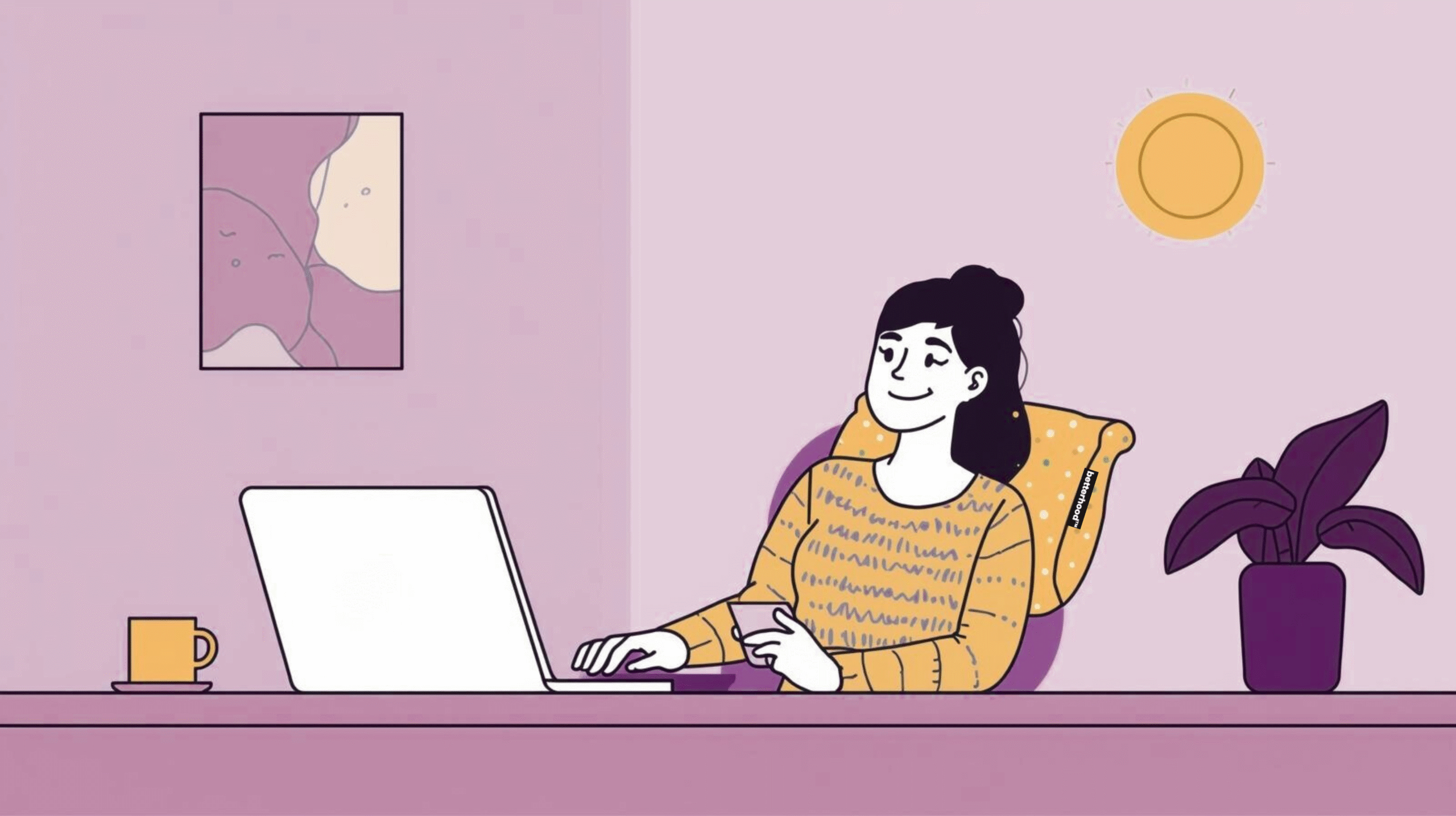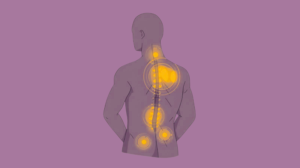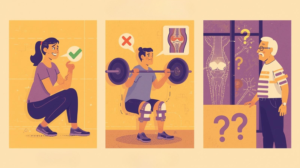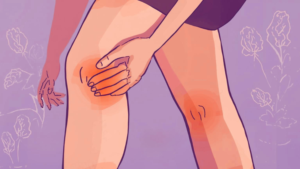The modern workplace has transformed into a sitting society. On average, office workers spend 6–8 hours a day seated, often without adequate movement. This sedentary lifestyle is taking a toll on spinal health, with rates of lower back pain, spinal disc strain, and poor posture climbing steadily worldwide.
While many try to combat these issues by purchasing ergonomic chairs or experimenting with standing desks, the truth is that no single fix is enough. Research shows that a combination of active and passive strategies, specifically, microbreaks and lumbar support, offers the best protection for your spine.
Microbreaks are short, frequent pauses to stretch, move, or change posture. They combat the harmful effects of static sitting by reactivating muscles, improving blood circulation, and reducing spinal compression. Lumbar support, on the other hand, provides a passive form of protection by maintaining your spine’s natural curvature and reducing stress on the lower back while seated.
This article will explain why your spine suffers during desk work, the science behind both microbreaks and lumbar support, and how combining them delivers superior benefits. You’ll also get practical tips for integrating them into your daily routine and answers to the most common questions about spine health at work.
Why Your Spine Suffers at the Desk
The human spine evolved for movement, not hours of stillness. When you remain seated for long periods, your posture gradually shifts toward positions that place strain on your musculoskeletal system:
- Spinal discs compress, limiting the movement of fluids that nourish them.
- Core and back muscles weaken, making it harder to maintain upright posture.
- Forward head posture strains the neck, upper back, and shoulders.
This static posture problem is compounded by repetitive daily habits. With time, it can lead to chronic issues such as
- Lumbar strain.
- Sciatica.
- Degenerative disc disease.
The World Health Organization (2020) has identified prolonged sitting as a major contributor to musculoskeletal disorders, especially in sedentary professions.
Importantly, posture isn’t just about alignment , it’s about movement. Even if you sit “perfectly,” staying in one position too long fatigues muscles and stiffens joints. This is why relying on a single measure, such as a lumbar cushion or a standing desk, doesn’t fully solve the problem. To protect your spine, you need both alignment (lumbar support) and mobility (microbreaks).
Understanding Microbreaks
Definition: Microbreaks are short breaks lasting 30 seconds to 3 minutes, taken every 30–45 minutes of desk work.
Why They Matter:
When sitting, your spinal discs experience constant pressure, and certain muscles (such as the hip flexors) remain in a shortened position. Microbreaks interrupt this cycle, allowing:
- Reduced disc pressure through posture change.
- Improved circulation, preventing swelling and stiffness.
- Muscle activation to restore balance.
Examples of Microbreaks:
- Standing back extensions – Counteract slouching.
- Neck rotations – Relieve upper spine tension.
- Shoulder rolls – Reduce trapezius strain.
- Desk marches – Keep lower limbs active.
- Walking to refill water – Adds movement without disrupting work.
A study by Benatti & Ried-Larsen (2015) found that breaking up sitting time significantly reduced musculoskeletal discomfort and improved metabolic health markers.
Pro Tip: Microbreaks are most effective when frequent and light, you don’t need to sweat, just move.
The Role of Lumbar Support
The lumbar spine naturally curves inward, a shape essential for absorbing shock and distributing body weight. Without support, prolonged sitting flattens this curve, stressing spinal discs, muscles, and ligaments.
Benefits of Lumbar Support:
- Maintains natural curvature (lordosis).
- Reduces intervertebral disc pressure.
- Encourages upright posture.
Types of Lumbar Support:
- Built-in ergonomic chairs – Adjustable for height and depth.
- Portable cushions – For multiple seating environments.
- DIY options – Rolled towels or small pillows.
A systematic review by Santos & Oliveira (2019) confirmed that lumbar support significantly reduces lower back discomfort in seated workers.
However, lumbar support isn’t magic, it’s passive. Without movement, muscles still weaken. That’s where microbreaks come in.
Why Microbreaks and Lumbar Support Work Better Together
Think of lumbar support and microbreaks as two halves of a complete spine-care strategy.
- Lumbar support keeps your posture correct while seated.
- Microbreaks keep your muscles active and flexible.
When used together, they prevent both static posture strain and muscular deconditioning. For example:
- A designer using lumbar support alone feels less pain, but stiffness still builds over time.
- A marketer taking microbreaks without lumbar support avoids stiffness but still risks spinal misalignment.
- Combining both delivers posture stability and mobility.
Ergonomic authorities like OSHA and NIOSH recommend both regular movement breaks and proper back support as part of workplace health guidelines.
Implementing the Combo in Your Daily Routine Ergonomic Setup
- Adjust chair height so knees are level with hips.
- Position the lumbar cushion at the lower back’s curve.
- Keep the monitor at eye level.
Microbreak Scheduling
- Use timers, apps, or smartwatch alerts.
- Every 30–45 minutes, take a 1–2 minute movement break.
Integrated Habits
- Stand during calls.
- Stretch before hitting “send” on emails.
- Walk during brainstorming.
Overcoming Barriers
- Educate team members on benefits.
- Encourage a culture of movement.
- Adjust strategies for home or hybrid work setups.
Long-Term Benefits for Spinal and Overall Health
Over time, the combined approach delivers:
- Lower risk of chronic back pain.
- Better posture awareness.
- Increased daily energy.
- Prevention of related discomfort in hips, shoulders, and neck.
Small, consistent changes compound into significant health improvements, protecting not just your spine, but your entire musculoskeletal system.
Conclusion
The modern office environment challenges our spinal health in ways that past generations never faced. Prolonged sitting compresses the spine, weakens muscles, and leads to discomfort that can eventually develop into chronic pain. While there is no single “magic fix,” the combination of microbreaks and lumbar support offers a simple, research-backed strategy that can be implemented immediately.
Microbreaks keep your body active, refreshing muscles and circulation, while lumbar support maintains healthy spinal alignment during seated periods. Together, they tackle both the static posture problem and the muscle inactivity that comes with desk work.
The best part is that these changes are practical and low-cost. Whether you work in a corporate office, at home, or in a hybrid setup, you can adjust your chair, add a lumbar cushion, and schedule short breaks throughout the day.
Small, consistent actions , repeated daily , compound into long-term protection for your back, improved posture, and greater overall well-being. Start today with one change: set a timer for your next microbreak, adjust your lumbar support, and give your spine the care it deserves.
Frequently Asked Questions
1. How often should I take a microbreak during the workday?
Every 30–45 minutes for 1–3 minutes. Frequent, short breaks are more effective than fewer, longer breaks.
2. What are the best microbreak exercises for spine health?
Neck tilts, shoulder rolls, back extensions, cat-cow stretches, and walking.
3. How do I choose the right lumbar cushion for my chair?
Look for medium-firm foam, adjustable straps, and a contour matching your lower back.
4. Is it okay to use lumbar support all day long?
Yes, but combine with movement to avoid static muscle fatigue.
5. Can microbreaks improve productivity as well as spine health?
Yes, studies show they reduce fatigue and improve cognitive performance.
References
- Benatti, F. B., & Ried-Larsen, M. (2015). The effects of breaking up prolonged sitting time: A review of experimental studies. Medicine & Science in Sports & Exercise, 47(10), 2053–2061. https://doi.org/10.1249/MSS.0000000000000654
- Chester, M. R., Rys, M. J., & Konz, S. A. (2002). Leg swelling, comfort, and fatigue when sitting, standing, and sit/standing. International Journal of Industrial Ergonomics, 29(5), 289–296. https://doi.org/10.1016/S0169-8141(01)00066-1
- Korhonen, T., Ketola, R., Toivonen, R., Luukkonen, R., & Häkkänen, M. (2003). Work-related and individual predictors for incident neck pain among office employees working with video display units. Occupational and Environmental Medicine, 60(7), 475–482. https://doi.org/10.1136/oem.60.7.475
- Rempel, D., Krause, N., Goldberg, R., Benner, D., Hudes, M., & Goldner, G. U. (2006). A randomised controlled trial evaluating the effects of two workstation interventions on upper body pain and incident musculoskeletal disorders among computer operators. Occupational and Environmental Medicine, 63(5), 300–306. https://doi.org/10.1136/oem.2005.022285 Santos, M. C., & Oliveira, C. B. (2019). Lumbar support for prevention and management of low back pain in sitting: A systematic review. Physiotherapy Theory and Practice, 35(8), 741–752. https://doi.org/10.1080/09593985.2018.1457494























